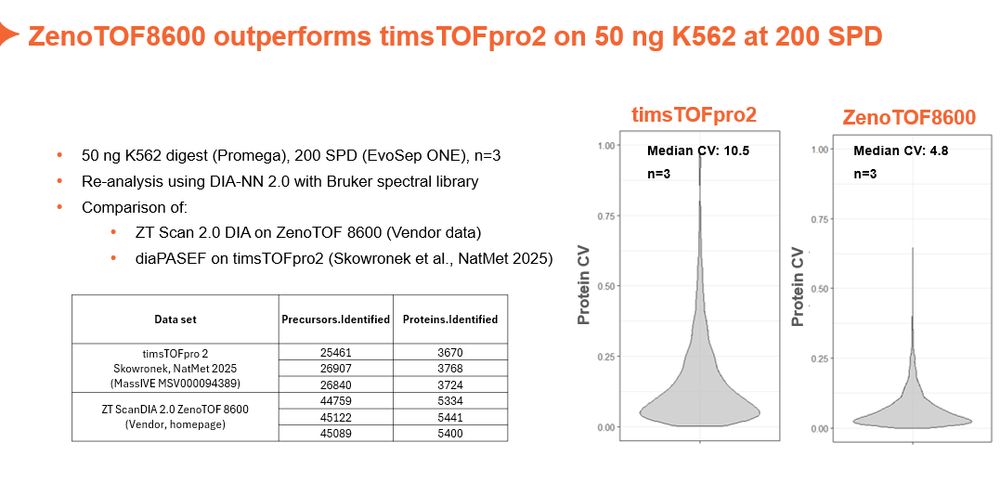
UD Alumni. Go Blue Hens!
🔗 Read more: theanalyticalscientist.com/issues/2025/...
#PFAS #MassSpec #SCIEX #ScienceForGood #DanaherNews

🔗 Read more: theanalyticalscientist.com/issues/2025/...
#PFAS #MassSpec #SCIEX #ScienceForGood #DanaherNews
www.sciencedirect.com/science/arti...

www.sciencedirect.com/science/arti...
Don’t miss this session at #SCIEXSummit2025
🔗 sciex.com/events/sciex-summit

Don’t miss this session at #SCIEXSummit2025
🔗 sciex.com/events/sciex-summit
Join live at #SCIEXSummit2025
🔗 sciex.com/events/sciex-summit

Join live at #SCIEXSummit2025
🔗 sciex.com/events/sciex-summit
@davidcolquhoun.bsky.social, Ihor Batruch, & Patrick Pribil

@davidcolquhoun.bsky.social, Ihor Batruch, & Patrick Pribil


https://www.newsbeep.com/au/2725/
In this article, data-dependent acquisition (DDA) experimental data collected by the ZenoTOF 8600 system was analyzed with MS-DIAL…

https://www.newsbeep.com/au/2725/
In this article, data-dependent acquisition (DDA) experimental data collected by the ZenoTOF 8600 system was analyzed with MS-DIAL…

268,000+ precursor & 12,000+ protein group IDs from 200 ng of sample using Aurora Series columns & Zeno SWATH DIA on the ZenoTOF 8600. Impressive numbers from SCIEX’s new flagship instrument.

268,000+ precursor & 12,000+ protein group IDs from 200 ng of sample using Aurora Series columns & Zeno SWATH DIA on the ZenoTOF 8600. Impressive numbers from SCIEX’s new flagship instrument.
🔍 Read the article 👉 buff.ly/tyywuRu
#DanaherNews #ZenoTOF8600 #SkepticsWelcome

🔍 Read the article 👉 buff.ly/tyywuRu
#DanaherNews #ZenoTOF8600 #SkepticsWelcome
Stop by the service and support booth in the SCIEX Hospitality Suite to get helpful answers from the people who know your instrument best.
Our expert team shares real-world advice from supporting thousands of instruments worldwide!
Stop by the service and support booth in the SCIEX Hospitality Suite to get helpful answers from the people who know your instrument best.
Our expert team shares real-world advice from supporting thousands of instruments worldwide!
Throw your trainers and your running gear in your suitcase and register now 👉 sciex.li/1pw179 #ASMS2025

Throw your trainers and your running gear in your suitcase and register now 👉 sciex.li/1pw179 #ASMS2025


#Quantitation #SCIEX

#Quantitation #SCIEX
Sciex 6600 TripleTOF analyses 99-million-year-old arthropods 🕷️ in amber.
Study identifies proteins from #Cretaceous #Holothyrida mites & #Cornupalpatum ticks!
de la Fuente et al. (2025) www.researchsquare.com/article/rs-6...


Sciex 6600 TripleTOF analyses 99-million-year-old arthropods 🕷️ in amber.
Study identifies proteins from #Cretaceous #Holothyrida mites & #Cornupalpatum ticks!
de la Fuente et al. (2025) www.researchsquare.com/article/rs-6...


Sciex 6600 TripleTOF analyses 99-million-year-old arthropods 🕷️ in amber.
Study identifies proteins from #Cretaceous #Holothyrida mites & #Cornupalpatum ticks!
de la Fuente et al. (2025) www.researchsquare.com/article/rs-6...


pubs.acs.org/doi/full/10....

pubs.acs.org/doi/full/10....


